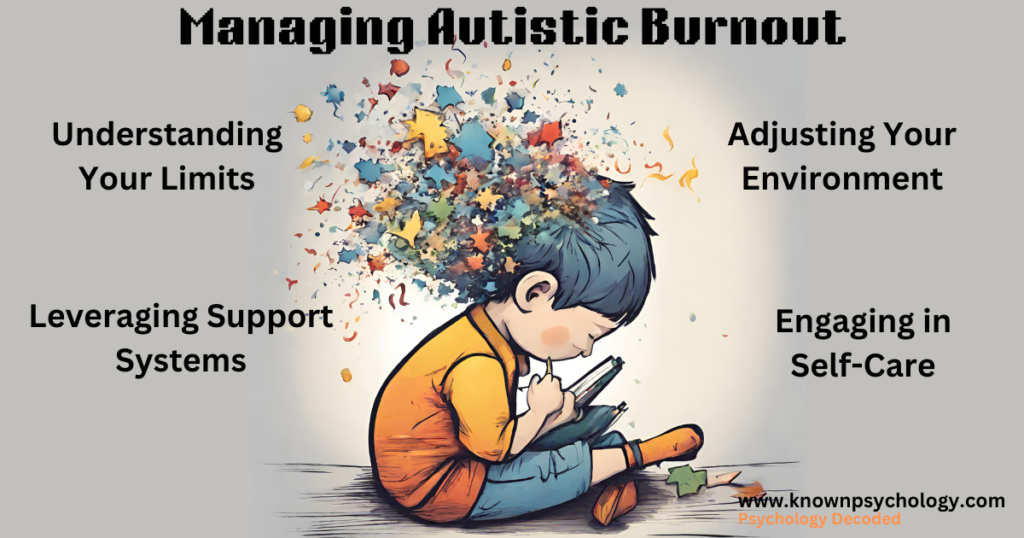
Autistic burnout is a term used within the autistic community to describe the intense physical, mental, and emotional exhaustion that autistic individuals often experience. This condition can occur when they are required to consistently cope with environmental demands that exceed their cognitive resources for extended periods. It’s crucial to recognize and address autistic burnout because it can significantly impact an individual’s functioning and quality of life.
What is Autistic Burnout
Autistic burnout is characterized by a profound depletion of energy, increased anxiety, and a decrease in functional abilities, which can persist for weeks or even months. Unlike typical fatigue that everyone experiences, autistic burnout specifically relates to the cumulative load of coping with a world designed for neurotypical people. It often results from prolonged periods of social masking, sensory overload, and the constant need to adapt to social norms that do not align with an autistic person’s inherent nature.
Symptoms of Autistic Burnout
Understanding the symptoms of autistic burnout is essential for early identification and management. Here, we delve into the various manifestations of this condition:
Emotional Exhaustion
Emotional exhaustion is a prominent aspect of autistic burnout, where individuals often experience a significant depletion in their emotional reserves. This intense state of fatigue can manifest as feelings of apathy, sadness, or overwhelming stress, making it difficult to engage with everyday emotional demands. For autistic individuals, this emotional drain is exacerbated by the constant need to navigate and conform to social expectations that may not align with their natural inclinations or sensory preferences. As a result, the effort to mask autistic traits and manage sensory overload without adequate breaks can lead to a profound and debilitating level of emotional exhaustion, further complicating their capacity for emotional regulation and interpersonal interactions.
Cognitive Difficulties
During burnout, cognitive functions can be significantly impaired. Cognitive difficulties are manifesting as impairments in memory, focus, and the ability to process information efficiently. During periods of burnout, autistic individuals often experience a significant decline in their executive functioning, making tasks that require planning, multitasking, or complex problem-solving exceedingly challenging. This cognitive strain can contribute to feelings of frustration and helplessness, as everyday activities like maintaining schedules, managing finances, or completing work assignments become overwhelming. The cognitive load is further exacerbated by the need to navigate social interactions, which may demand additional mental resources that are already taxed during a burnout phase.
Loss of Skills
Another one of the most distressing symptoms of autistic burnout is the loss of skills, or regression, that individuals may experience. This can manifest as difficulties in performing tasks that were previously manageable, such as engaging in conversation, maintaining personal hygiene, or managing daily routines. Skills related to work or school, like concentration and task completion, may also decline. This regression is not permanent but can significantly affect an individual’s confidence and autonomy. Understanding and acknowledging this symptom is crucial for supporting autistic individuals through periods of burnout, ensuring they receive the patience and assistance needed to regain stability and function.
Increased Sensitivity to Sensory Input
During autistic burnout, many individuals experience an increased sensitivity to sensory input, a condition that can greatly amplify their discomfort in everyday environments. This heightened sensitivity may manifest as an intolerance to bright lights, loud noises, or specific textures, which were previously bearable or only mildly irritating. Such sensory overload can exacerbate feelings of exhaustion and overwhelm, leading to a need for more frequent and longer periods of recovery in quiet, controlled environments. This intense reaction to sensory stimuli can severely limit an individual’s ability to participate in social activities, work, or even manage day-to-day tasks, thereby impacting their overall quality of life during episodes of burnout.
Withdrawal
During autistic burnout, individuals often experience a profound withdrawal from social interactions and activities they previously engaged in. This withdrawal is not a mere preference for solitude but a necessary coping mechanism to reduce sensory and social overload. Autistic burnout can make the demands of socializing feel overwhelming, leading to an increased need for alone time to recover from social exhaustion. This retreat can affect personal relationships and professional commitments, as the individual may struggle to communicate their need for space, often leading to misunderstandings.
Changes in Mood
Autistic burnout can also trigger significant changes in mood, manifesting as increased irritability, anxiety, or depression. These mood fluctuations are more intense and can occur more suddenly than under typical circumstances. The emotional resilience usually available to handle daily stressors diminishes, making even minor inconveniences or changes feel insurmountable. This heightened emotional sensitivity can complicate personal interactions and increase feelings of isolation, as individuals may feel misunderstood by those around them who are unaware of the intensity of their emotional experiences during burnout.
Physical Symptoms
Physical symptoms are a significant aspect of autistic burnout, manifesting as profound and pervasive fatigue that can drastically reduce an individual’s ability to function in daily life. This fatigue isn’t just a result of mental or emotional exhaustion but also involves physical energy depletion, making even simple tasks feel insurmountable. Additionally, individuals might experience other physical symptoms like increased headaches, muscle weakness, and a heightened response to sensory stimuli, which can exacerbate discomfort and pain. These physical effects often require considerable time for recovery and can severely limit personal and professional activities, emphasizing the need for understanding and accommodations to manage this challenging aspect of autistic burnout.
A note from Known_Psychology
Recognizing autistic burnout is the first step towards meaningful recovery. Understanding its impact can empower individuals to seek appropriate support and adjustments in their environments. By increasing awareness and understanding of autistic burnout and its symptoms, we can create more supportive and accommodating spaces for autistic individuals, helping them manage and recover from burnout more effectively.
Mariam holds an MS in Sociology with a specialization in Medical Sociology and Social Psychology. With a strong academic background and extensive research work in both fields, she brings depth and clarity to complex topics. Her writing explores the intersection of society, health, and the human mind, making academic ideas easy to grasp and relevant to everyday life.



Very interesting information!Perfect just what I was searching for!
I think you have remarked some very interesting points, thankyou for the post.
I haven¦t checked in here for some time as I thought it was getting boring, but the last few posts are great quality so I guess I¦ll add you back to my everyday bloglist. You deserve it my friend 🙂
I am lucky that I found this site, just the right information that I was searching for! .
Pingback: What Not to Do With an Autistic Child? - KnownPsychology
Pingback: How to prevent Autistic Burnout at School or Workplace?
Pingback: Strategies for Managing Autistic Burnout - KnownPsychology